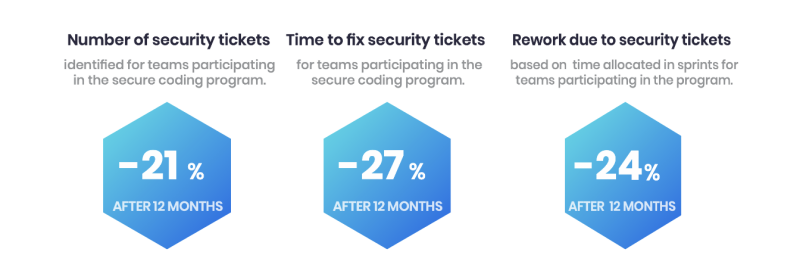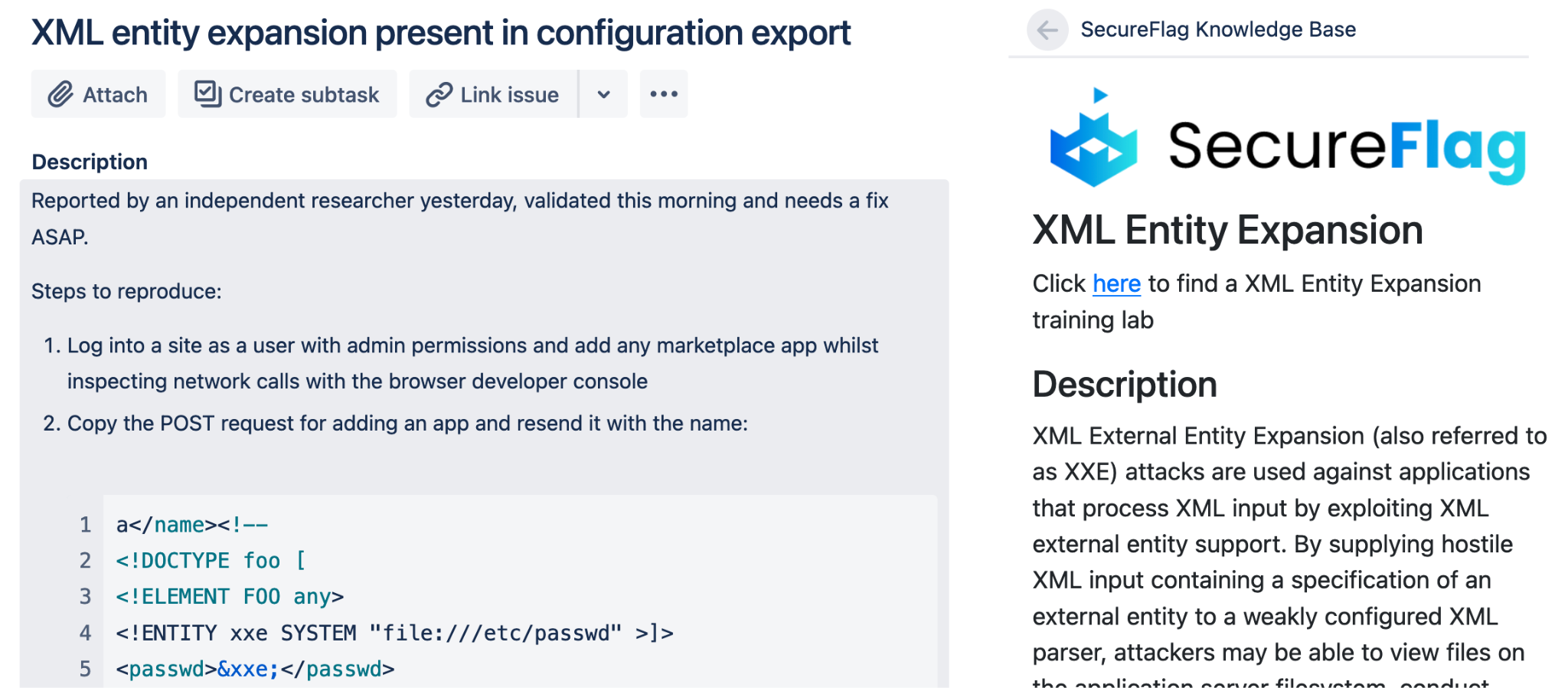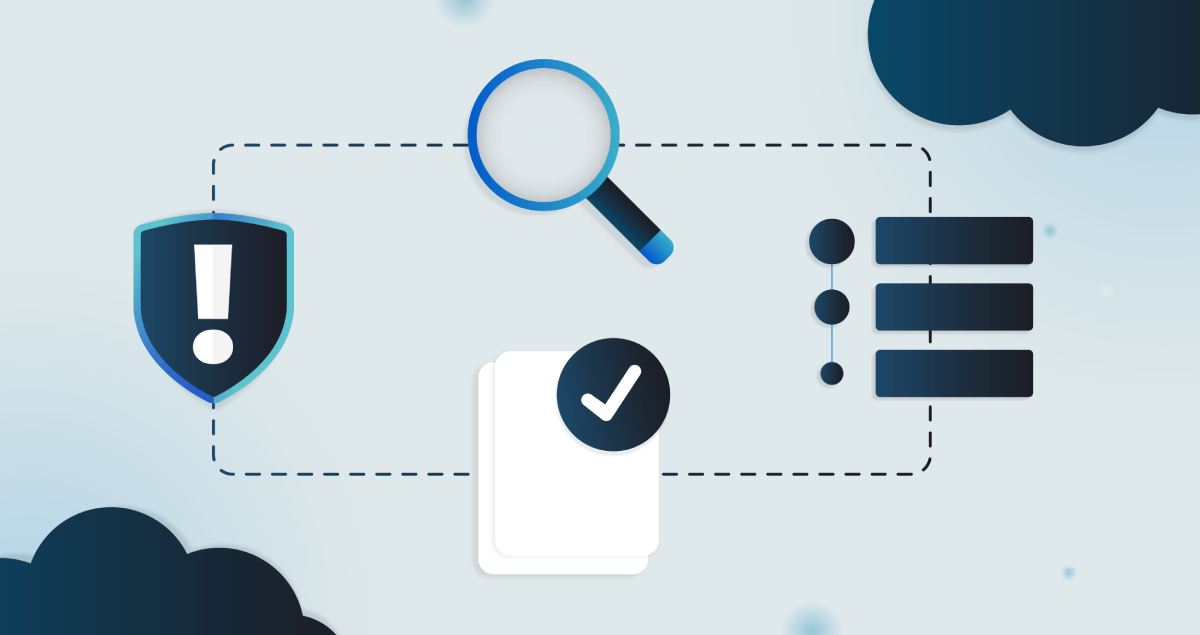With more than 70% of vulnerabilities introduced during development and automated tools only able to detect a subset of vulnerability classes, writing secure code is more critical than ever. Secure coding, however, can be quite challenging due to various factors.

In this blog post, we will discuss the reasons why secure coding is hard and how SecureFlag’s hands-on labs and adaptive training approach can help developers overcome these challenges.
1. Complexity of Modern Software
Modern software systems are complex and sophisticated, with a large number of components, dependencies, and interactions. The more complex the software, the harder it is to ensure that the code is adequately secure.
Complex software systems often have obfuscated or hidden interactions and dependencies as well that can create vulnerabilities, and identifying and mitigating these risks can be a significant challenge.
2. Rapid development cycles
Developers are under continuous pressure to deliver code quickly to meet deadlines and stay competitive. This pressure can lead to mistakes or shortcuts that can result in security vulnerabilities. Secure coding requires time and attention to detail, which can be challenging to achieve in a fast-paced development environment.
3. Balancing Security with Functionality
Developers face a constant battle to balance security with functionality. In order to meet deadlines and deliver features, they may prioritise functionality over security, thus leaving vulnerabilities unaddressed. Moreover, implementing security features can sometimes impact the performance and usability of the software, making it challenging to find the right balance.
4. Lack of Secure Coding Guidelines
While numerous secure coding guidelines are available, they often lack consistency and are sometimes outdated. Developers may struggle to find reliable and up-to-date resources that cover the specific languages, libraries, and frameworks they are working with.
5. Lack of security training
Many developers are not trained in security, which can make secure coding particularly challenging. Secure coding requires knowledge of security principles and an understanding of potential vulnerabilities and how to mitigate them. Without this training, developers may - and often do - inadvertently introduce security vulnerabilities into their code.
How SecureFlag Tackles The Training Challenge
SecureFlag’s hands-on secure coding training provides developers with the necessary security training to write software that is secure from the first keystroke. The platform offers secure coding labs in more than 40 programming languages, infrastructure and cloud technologies, enabling developers to practice secure coding techniques in real virtualised environments, making it easier for them to understand the complexities of secure coding.
Participants can experiment with thousands of real-world scenarios and see the immediate impact of their coding decisions, allowing them to learn from their mistakes without putting their organisation’s applications at risk.
SecureFlag’s goal is to teach development teams how to write software that is secure from the start.
We understand that not all training is created equal, and in order for a secure coding training program to be effective, it must:
- Train participants with hands-on labs relevant to their job type, core technology, and experience level
- Use adaptive training to focus on the areas in which each developer needs more help, thus maximising the training time allocated
- Involve team managers and executive sponsors to federate the program and convey its importance to the organisation
- Keep engagement high via tournaments and other gamification elements
- Include a certification programme to establish a minimum proficiency level for all developers in identifying and remediating vulnerabilities
- Recognise distinguished participants for their achievements
- Organisations using SecureFlag’s training platform have experienced significant improvements in their security posture.
After a year of use, customers saw a 21% average reduction in the number of new security vulnerabilities introduced in the SLDC, a 27% average reduction in the time to fix existing security vulnerabilities, and an average reduction of 24% in the time spent in sprints addressing security vulnerabilities.

Data based on 87 participating SecureFlag customers
In addition to our proactive approach to teaching developers how to build secure software from the start, SecureFlag also offers SDLC plugins for remediation assistance.

These plugins provide just-in-time training to developers, offering information on how to fix vulnerabilities and access to relevant labs for practice. By investing in SecureFlag’s training and leveraging its SDLC plugins, organisations can reduce the risk of security breaches, protect sensitive data, and maintain the trust of their customers and stakeholders.
Secure coding is indeed a challenging task, but with the right training and resources, developers can bridge the gap and build more secure software. SecureFlag’s hands-on lab training empowers developers with the knowledge and skills they need to overcome the challenges of secure coding and create software that is resistant to vulnerabilities and attacks.
Contact us today to book your demo and initiate a free trial of the platform to understand why hundreds of organisations have chosen SecureFlag for their secure coding training program.


